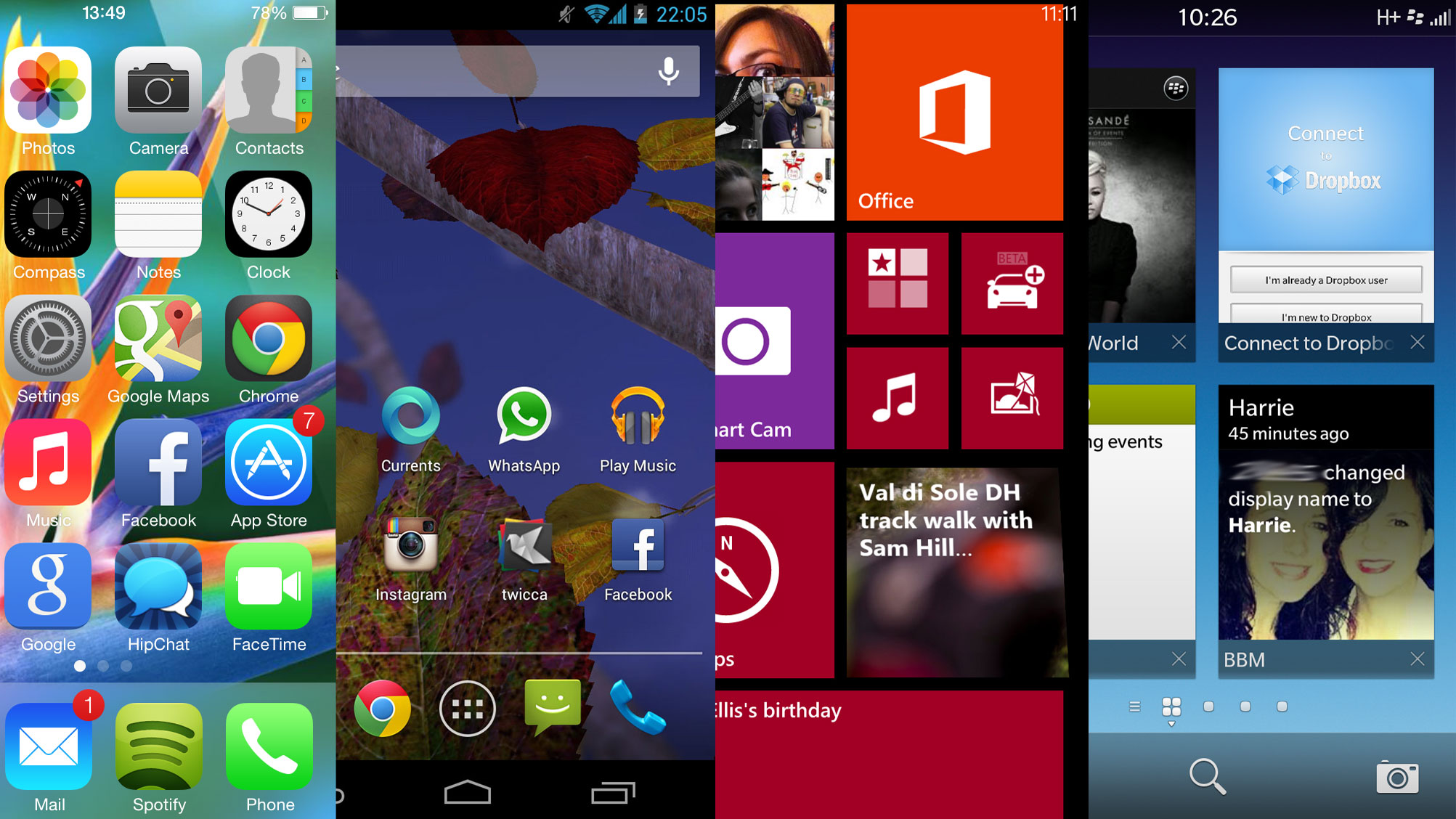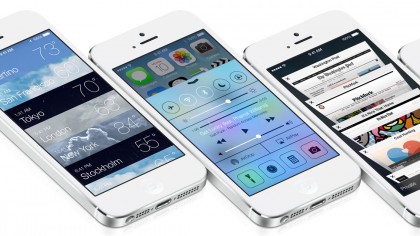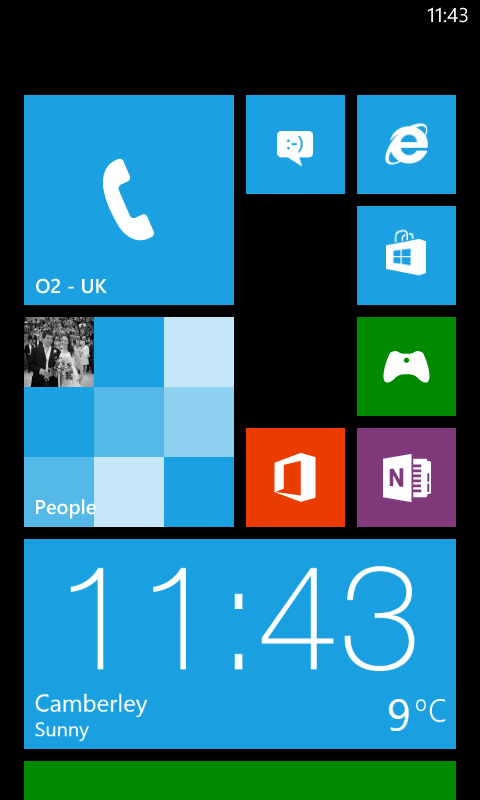iOS 7 vs Android Jelly Bean vs Windows Phone 8 vs BB10

The battle for dominance of the smartphone world is one that has been raging for a few years. With the migration of consumers from feature phones to modern wonders such as the iPhone 5 and the HTC One, or even the cheap as chips offerings like the Nokia Lumia 520 or Huawei Ascend G330, it is clear where the money, and the future lies.
We've seen some impressive hardware come and go, quad-cores grace most flagship devices (i.e. Sony Xperia Z or HTC One) and there is even the quad/octa core that sits inside the Samsung Galaxy S4, dependent on your location.
Needless to say, all the big guns in the tech industry have some level of input into the mobile OS world. Apple has iOS (just about to reach iOS 7), Google has Android, the most recent version being 4.2 Jelly Bean, Microsoft has Windows Phone 8, leaving BlackBerry with its hopes pinned on BB10.
Interface
The iOS 7 interface is a radical new look compared with previous iterations. Although with a clean and modern new look, the formula based upon simplicity is one that has been stuck to. Icons have had an overhaul, and there is transparency through apps, giving iOS devices a more unified feel.

Users familiar with previous iOS versions may be in for a bit of a shock, with elements such as the lock screen taking a new look. Elements now seem more rounded, and much brighter than before. On the face of it, things seem very different with iOS 7, but the real changes go deeper.
Android is currently sitting at version 4.2, which is another iteration of the popular Jelly Bean OS. Jelly Bean built upon the work done by 4.0 Ice Cream Sandwich, with everything being much smoother with 'Project Butter', and the introduction of Google Now.

Pretty much every OEM has placed a skin over the top of Android, take a look at HTC's Sense, Samsung's Touchwiz or Huawei's Emotion UI.
Sign up for breaking news, reviews, opinion, top tech deals, and more.
That said, nigh on every version builds on the use of multiple home screens populated with widgets, and apps being kept tidy in a 'drawer'.
Microsoft's offering bases itself around a system of 'LiveTiles'. These are used in a similar way to widgets on Android, providing information at a quick glance. Users of Windows Phone 7, or Windows 8 on tablets or desktops will feel right at home.
In terms of user customisation, much like iOS, Windows Phone 8 is relatively closed. Live Tiles can be resized, so that more important tiles can take up more screen real estate, and the tile colour can be any of 20 variations. It is also possible to change the lock screen, to bring up photos, or widgets and notifications.

Out of Canada comes BB10, with BlackBerry pinning pretty much all its hopes on the OS. In a similar way to Windows Phone 8, BB 10 allows 8 'Active Frames', of which only 4 are visible at one time.
These show the most recent apps used, as well as any information that app may offer, be it weather or calendar events.
Being a totally different OS to prior BlackBerry OS iterations, BB10 is at first a little confusing to use. Closing apps by running your finger up from the bottom of the screen feeling a little unnatural.
The BlackBerry 10 lock screen comes complete with notifications, calendar events and ability to quick launch the camera.
Camera
With the Camera app being one of the most widely used features on the modern smartphone, it is only natural that every OS has given the camera a certain level of attention. One feature we are very fond of, that appears on iOS 7, pretty much every Android UI and BB10 is the ability to launch the app directly from the lock screen.